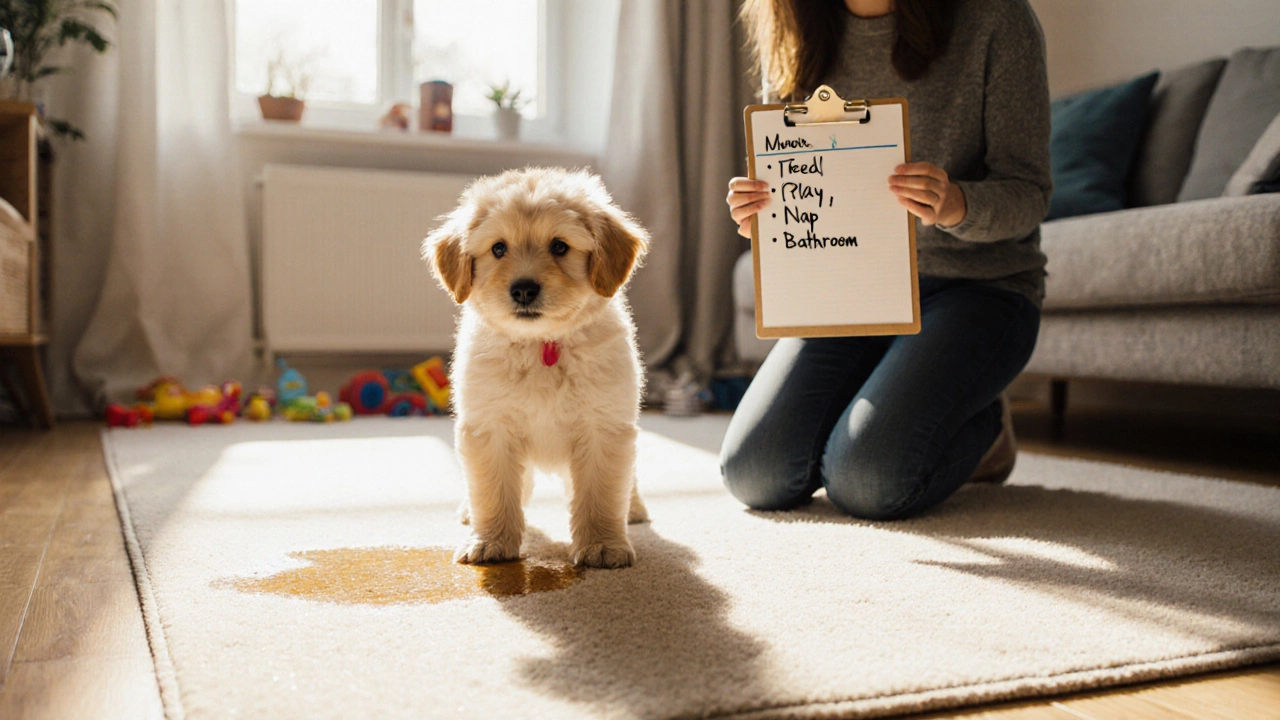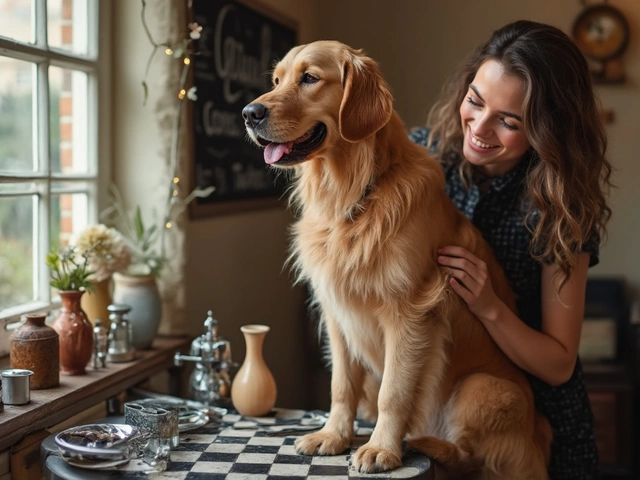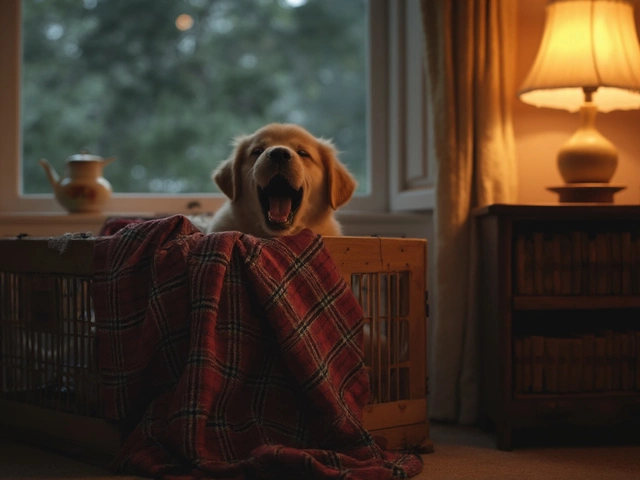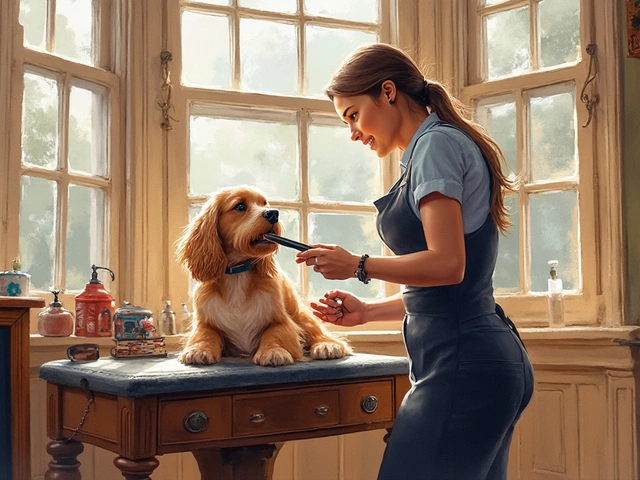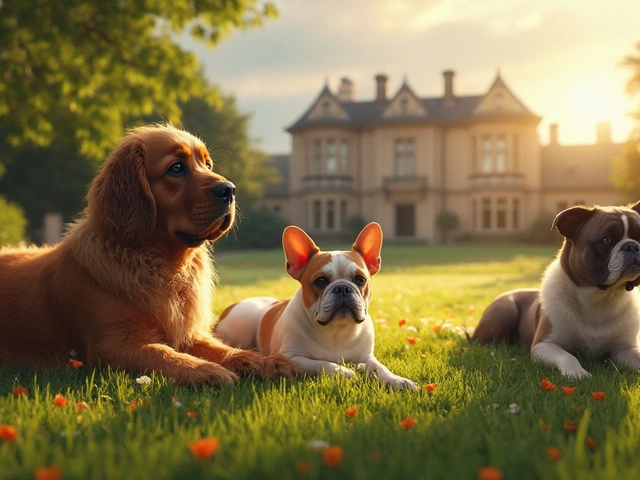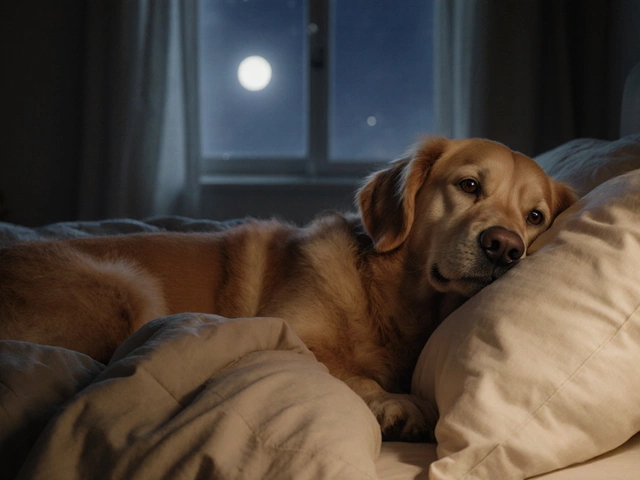Puppy Housebreaking Schedule Calculator
Create Your Puppy's Housebreaking Schedule
Enter your puppy's age and we'll calculate the optimal bathroom break schedule based on bladder development.
Your Puppy's Schedule
Recommended Bathroom Breaks
| Time | Activity | Recommendation |
|---|
Key Takeaways
- Set a consistent schedule and stick to it from day one.
- Crate training, pee pads, and timed outdoor trips each have strengths-pick what fits your home.
- Reward the right behavior immediately; ignore the accident.
- Clean accidents with an enzymatic cleaner to erase scent cues.
- Patience and observation are the biggest tools you have.
When a fluffy newcomer starts leaving little presents around the living room, it feels like a personal attack. The good news? Puppy housebreaking is a skill you can teach, not a personality flaw. Below you’ll find a step‑by‑step plan that turns chaos into a tidy routine, no matter if you live in an Auckland apartment or a country house.
Why Puppies Have Accidents Inside
Understanding the why makes the how much easier. A 10‑week‑old puppy’s bladder holds roughly the size of a marble-about 1 ounce of urine. Their sphincter muscles aren’t fully developed, so they need to go every 30‑45 minutes, plus after meals, play, or waking up. Add a new environment, and they’ll mark to explore. Realizing this helps you set realistic expectations: you’re not dealing with a stubborn dog, you’re working with an under‑developed body.
Creating a Predictable Routine
Consistency is the backbone of any training plan. Write down the times you feed, play, and sleep, then schedule bathroom breaks around those events. A simple table can keep you on track:
| Time | Activity | Bathroom Cue |
|---|---|---|
| 6:30 am | First meal | Outside within 5 min |
| 7:15 am | Play | Outside after play |
| 9:00 am | Nap in crate | Outside right after waking |
| 12:00 pm | Lunch | Outside within 5 min |
| 3:00 pm | Walk | Outside during walk |
| 6:00 pm | Dinner | Outside within 5 min |
| 9:30 pm | Final bathroom | Outside before bedtime |
Adjust the slots to fit your lifestyle, but keep the intervals short enough for the puppy’s tiny bladder.
Option 1: Crate Training
When done right, a crate becomes a cozy den, not a prison. Crate training uses the natural den instinct of dogs to encourage bladder control. Choose a crate just big enough for the puppy to stand, turn, and lie down. Too much space invites a bathroom corner inside.
- Introduce the crate with a soft blanket and a favorite chew toy.
- Feed meals inside the crate so the pup associates it with positive experiences.
- Close the door for short periods while you’re in the same room; gradually increase duration.
- Never use the crate as punishment; it must stay a happy place.
When you leave the house, the puppy will naturally hold it, because it knows the crate is a safe spot. If an accident occurs, it likely means the crate was left too long or the schedule needs tightening.
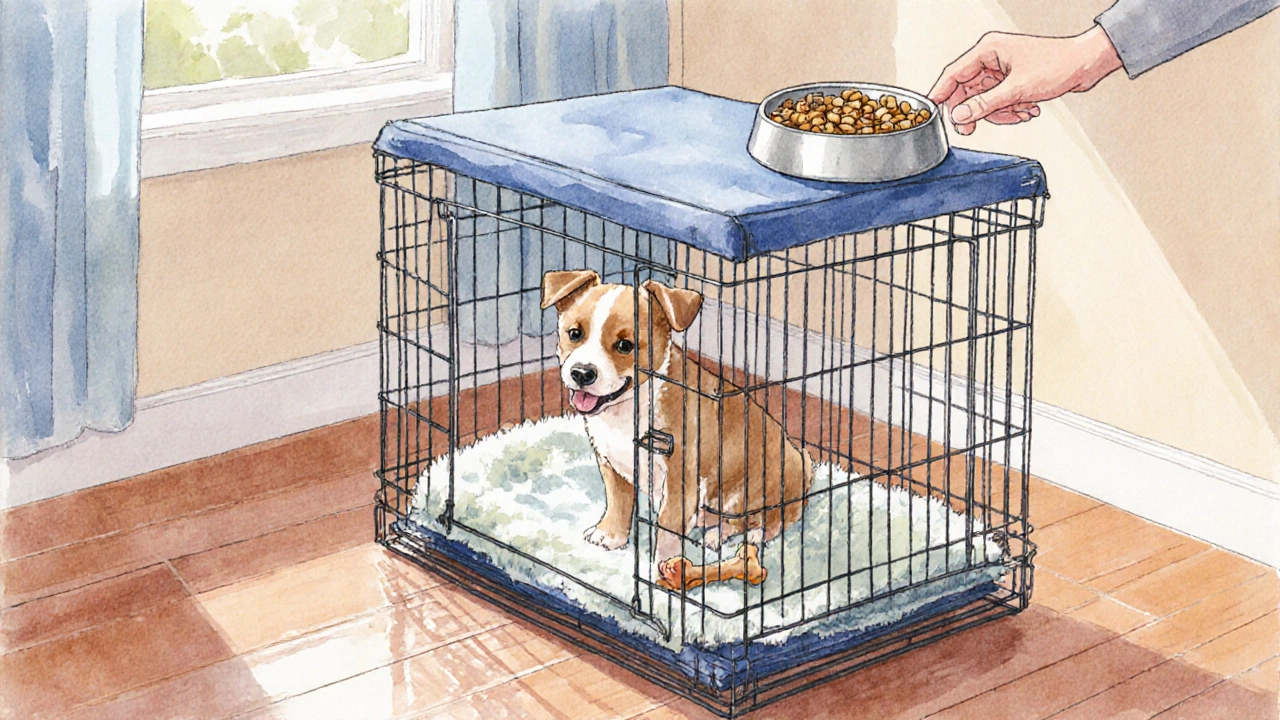
Option 2: Pee Pad Training
For high‑rise apartments or rainy days, pee pads give a backup plan. Pee pads are absorbent, disposable mats that provide a designated indoor bathroom spot. Choose a pad with a scent attractant to guide the puppy.
- Place the pad in a low‑traffic corner.
- Supervise and guide the puppy to the pad after each feeding.
- Reward immediately when they use the pad.
- Gradually move the pad closer to the door, then outside, to transition to outdoor elimination.
Remember: pads are a stepping stone, not a permanent solution if you want a fully outdoor‑trained dog.
Option 3: Outdoor Scheduling
The classic method is simple-take the puppy outside on a leash to a consistent spot every 30‑45 minutes. Outdoor scheduling relies on timed trips to reinforce the habit of eliminating outdoors. Pick a quiet area where you can stay for a minute or two.
Use a cue word like “go potty” right before the puppy starts. When you hear the first sniff or squat, repeat the cue. Once the puppy finishes, reward with praise and a treat.
Positive Reinforcement: The Core of Success
What works better than a treat? Nothing. Praise, a quick game, or a snack delivered the moment the puppy finishes on the right spot cements the behavior. Positive reinforcement is a training philosophy that rewards desired actions to increase their frequency. Avoid scolding-puppies can’t connect a past accident with a present reprimand.
Keep treats small (a pea‑size piece) to avoid over‑feeding. If you’re indoors, a firm “yes!” followed by a clicker or a hand‑clap works just as well.
Cleaning Accidents the Right Way
When an accident happens, the first step is to neutralize the scent. Regular cleaners leave a lingering odor that encourages repeat accidents. Use an enzymatic cleaner, which breaks down urine proteins at the molecular level.
Steps:
- Blot excess liquid with paper towels-no rubbing.
- Apply the enzymatic solution generously; let it soak for 10‑15 minutes.
- Air‑dry or pat dry; avoid using a heat dryer that can set the smell.
Repeat if the odor persists. This simple habit stops the puppy from “re‑marking” the same spot.
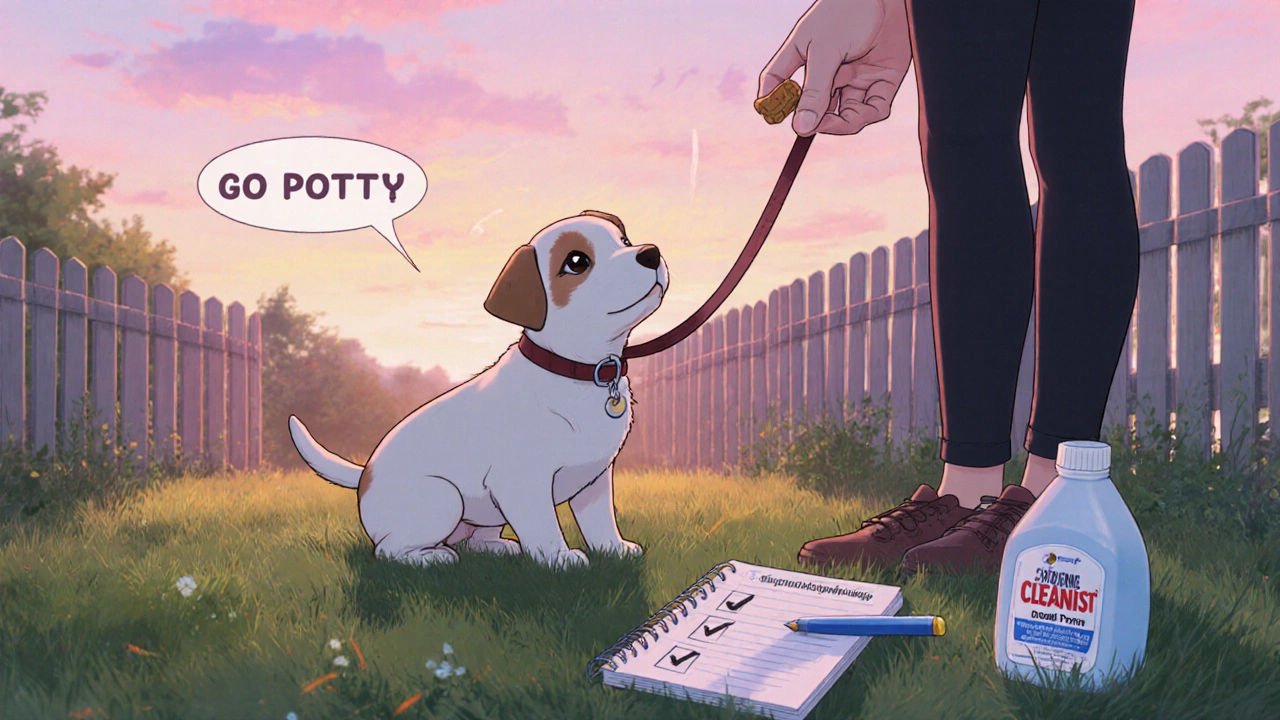
Common Pitfalls and How to Fix Them
- Inconsistent timing: If you skip a bathroom break, the puppy will hold longer and may have an accident. Use a phone alarm.
- Too much freedom: Letting the puppy roam unsupervised before they’re reliable leads to hidden accidents. Use baby gates or a playpen.
- Punishing accidents: Scolding creates anxiety and can make the puppy hide future accidents. Keep calm and focus on the next successful outing.
- Ignoring signals: Sniffing, circling, or whining are clear cues. React instantly to avoid missed opportunities.
Checklist for a Successful House‑breaking Phase
- Choose a primary method (crate, pee pad, outdoor) and stick with it for at least two weeks.
- Set a feeding schedule-same times, same amount.
- Mark bathroom times on a calendar or app.
- Place a crate or playpen in a low‑traffic area.
- Keep treats and a clicker handy for immediate rewards.
- Stock an enzymatic cleaner for quick cleanup.
- Log any accidents-time, location, possible trigger.
When to Seek Professional Help
If your pup is consistently missing the mark after four weeks of diligent effort, a certified dog trainer or a veterinarian can rule out medical issues (UTI, gastrointestinal problems) and provide tailored advice.
Frequently Asked Questions
How often should I take my puppy outside?
Every 30‑45 minutes, and immediately after meals, naps, or play sessions. Consistency prevents bladder over‑stretch.
Can I rely solely on pee pads?
Pee pads are handy as a transition tool, but they don’t teach outdoor elimination. Gradually move the pad toward the door and then outside to avoid long‑term indoor habits.
What’s the best size crate for a growing puppy?
Pick a crate that allows the puppy to stand, turn, and lie down comfortably. As they grow, you can use a divider to shrink the space rather than buying a new crate.
How do I stop my puppy from marking inside?
Neutering helps reduce marking, but the key is to limit unsupervised roaming, clean accidents with enzymatic cleaners, and reward only outdoor elimination.
My puppy peed in the crate-what’s wrong?
Usually the crate was left too long or the puppy wasn’t taken out soon enough after eating. Shorten crate time and add a bathroom break right after feeding.
